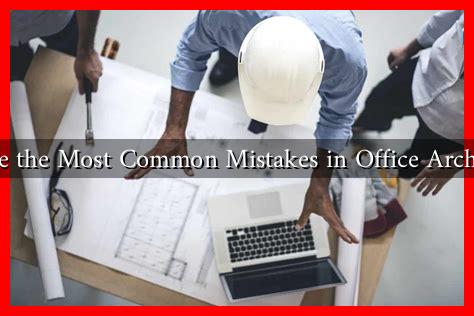-
Table of Contents
What Are the Most Common Mistakes in Office Architecture?
Office architecture plays a crucial role in shaping the work environment, influencing productivity, employee satisfaction, and overall company culture. However, many organizations fall into common pitfalls when designing their office spaces. This article explores the most frequent mistakes in office architecture, providing insights and examples to help businesses create more effective work environments.
1. Ignoring Employee Needs
One of the most significant mistakes in office architecture is neglecting the needs and preferences of employees. A workspace that does not consider the comfort and functionality for its users can lead to decreased productivity and morale.
- Open vs. Closed Spaces: While open-plan offices are popular for fostering collaboration, they can also lead to distractions. A study by the University of Sydney found that employees in open offices reported a 32% increase in distractions.
- Ergonomics: Failing to incorporate ergonomic furniture can lead to health issues. According to the Occupational Safety and Health Administration (OSHA), poor ergonomics can result in musculoskeletal disorders, costing companies billions in lost productivity.
2. Lack of Flexibility
In today’s fast-paced business environment, flexibility is key. Office designs that do not allow for adaptability can quickly become outdated.
- Static Layouts: Fixed workstations can hinder collaboration and innovation. Companies like Google and Facebook have embraced flexible workspaces that can be reconfigured as needed.
- Technology Integration: Failing to incorporate technology into the design can limit functionality. For instance, spaces should be equipped with adequate power outlets and high-speed internet to support modern work practices.
3. Poor Lighting Choices
Lighting is a critical aspect of office architecture that is often overlooked. Poor lighting can lead to eye strain, fatigue, and decreased productivity.
- Natural Light: A study by the Heschong Mahone Group found that employees with access to natural light reported a 51% drop in eyestrain and a 63% decrease in headaches.
- Overhead Lighting: Relying solely on harsh overhead lighting can create an uncomfortable atmosphere. Incorporating a mix of ambient, task, and accent lighting can enhance the workspace.
4. Neglecting Acoustics
Noise levels in an office can significantly impact employee concentration and productivity. Poor acoustic design can lead to a disruptive work environment.
- Soundproofing: Failing to implement sound-absorbing materials can result in high noise levels. Companies like Dropbox have invested in acoustic panels to minimize distractions.
- Designated Quiet Areas: Not providing spaces for quiet work can lead to frustration. Creating designated quiet zones can help employees focus better.
5. Underestimating the Importance of Break Areas
Break areas are essential for employee well-being and productivity. Neglecting these spaces can lead to burnout and decreased morale.
- Social Interaction: Break areas encourage social interaction, which can foster teamwork and collaboration. Companies like Zappos have designed vibrant break rooms to promote a positive culture.
- Relaxation Spaces: Providing areas for relaxation can help employees recharge. Incorporating elements like greenery and comfortable seating can enhance these spaces.
Conclusion
In conclusion, effective office architecture requires careful consideration of various factors, including employee needs, flexibility, lighting, acoustics, and break areas. By avoiding these common mistakes, organizations can create work environments that enhance productivity, foster collaboration, and improve employee satisfaction. As the workplace continues to evolve, it is essential for businesses to adapt their office designs to meet the changing demands of their workforce. For more insights on office design trends, you can visit Architectural Digest.

